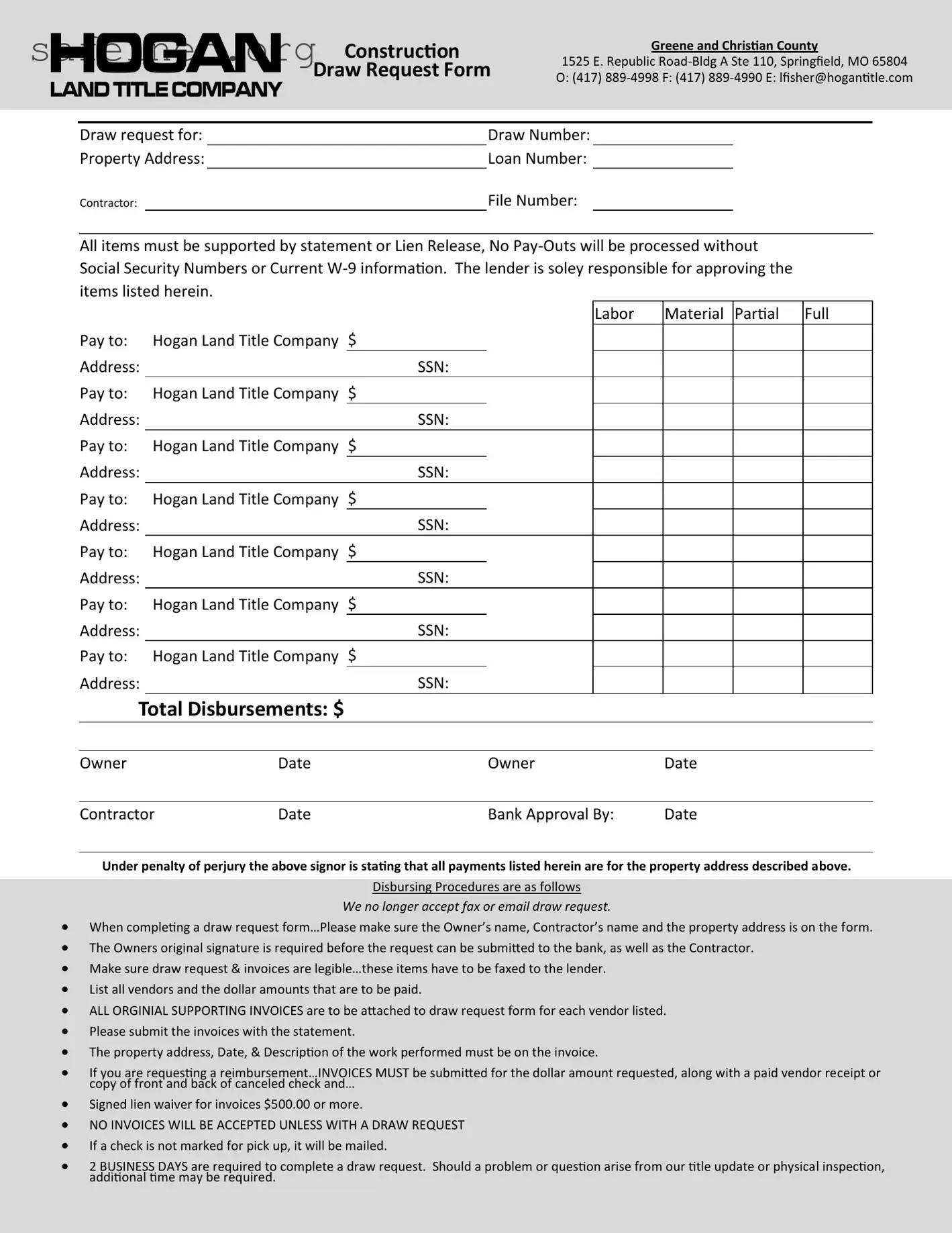What is the purpose of the Construction Draw Request form?
The Construction Draw Request form is used to request disbursements for construction projects. It facilitates communication between property owners, contractors, and lenders, ensuring that funds are processed accurately and efficiently for the work completed on a property.
Who needs to submit the Construction Draw Request form?
The property owner or the contractor responsible for managing the construction project must submit the form. It is essential for ensuring that all parties are on the same page regarding payments for work completed.
What information is required on the form?
Key information includes the project address, loan number, contractor's name, draw number, and other relevant details. All items listed must also be supported by invoices or statements that confirm the amounts due for payment.
Are there specific requirements that must be met before submitting a request?
Yes, the form requires an original signature from the owner and the contractor. It is also essential that all invoices are legible and accurately reflect the work performed. Any supporting documents must also be attached to the request.
What happens if the request is missing necessary documentation?
If the Construction Draw Request is incomplete or lacks necessary supporting documents, the lender will not process the payment. It is crucial to ensure that all invoices are submitted alongside the request to avoid delays.
How are funds disbursed once a request is approved?
Once the request is approved by the lender, funds can be disbursed according to the agreement. Payments may be mailed to the designated address or made available for pick-up, depending on the instructions provided and the arrangement with the lender.
What should be done if additional information is needed after submission?
Should any issues arise or further information be required following submission, the lender may contact the owner or contractor for clarification. It is advisable to have all relevant documentation ready and to respond promptly to any requests.
How frequently can a Construction Draw Request be submitted?
The frequency of submissions may depend on the agreement in place and the progress of the construction work. Typically, requests can be made as needed, but they should align with completed phases of work to ensure accurate funding.

